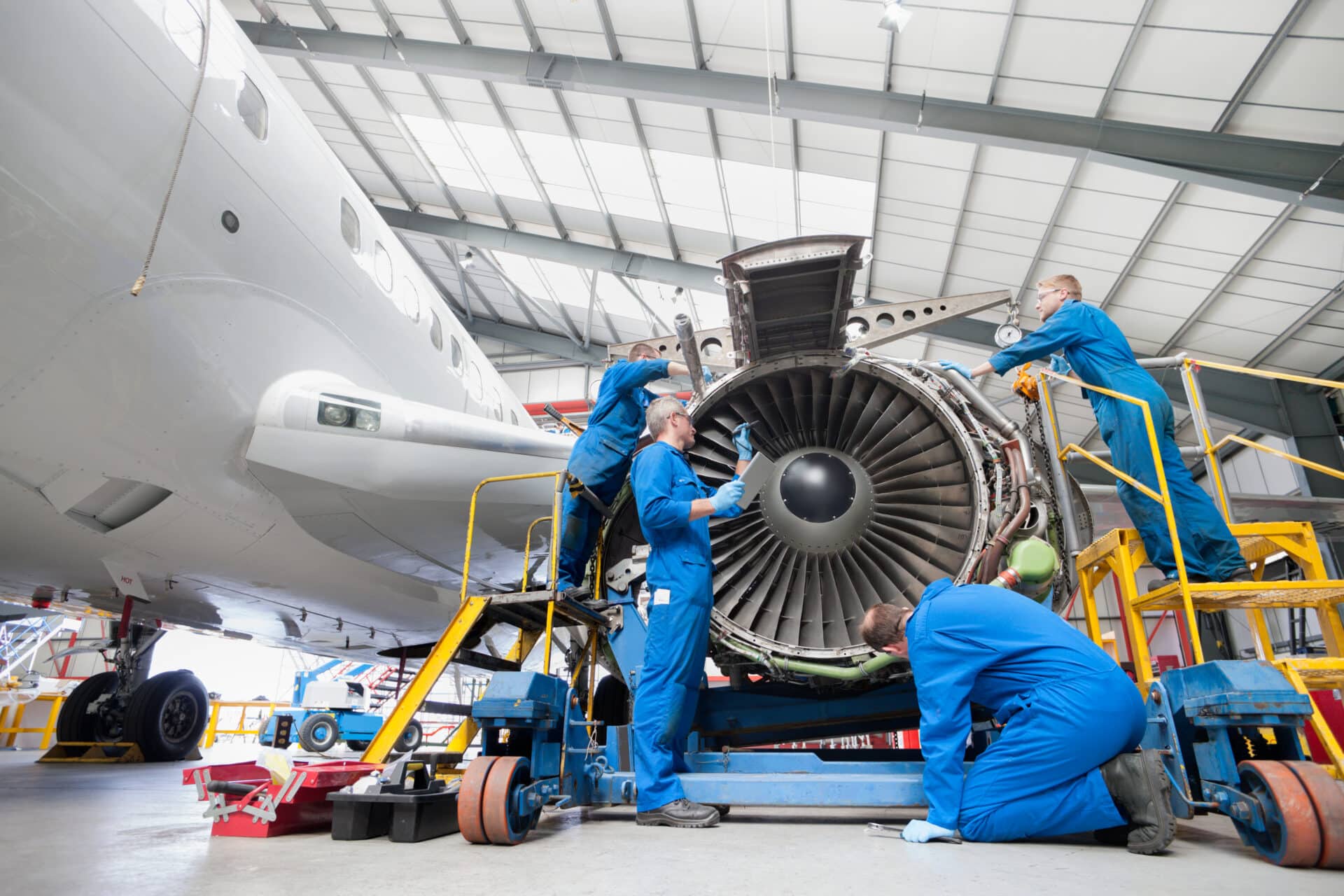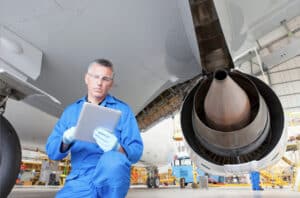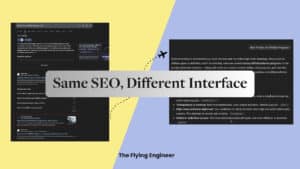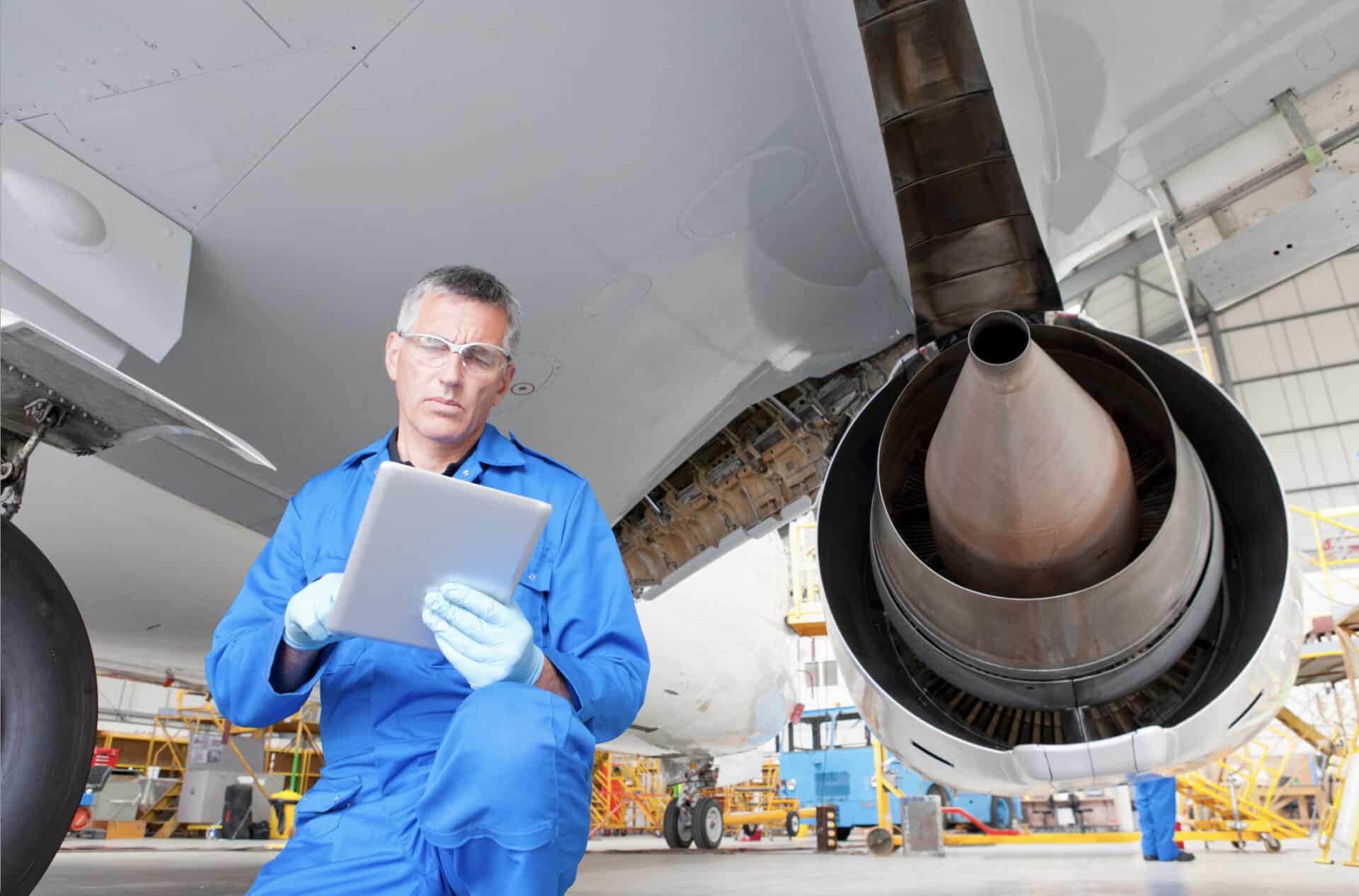Aircraft maintenance represents one of the most critical aspects of aviation safety and operational efficiency. Whether operating a commercial airline fleet, managing corporate aircraft, or owning a private jet, selecting the right maintenance provider directly impacts aircraft airworthiness, operational reliability, and long-term asset value.
The global aircraft Maintenance, Repair, and Overhaul (MRO) industry has evolved into an $88+ billion market, projected to exceed $130 billion by 2030. This growth reflects increasing aircraft complexity, expanding global fleets, and stringent regulatory requirements that demand specialized expertise and advanced capabilities.
This comprehensive guide examines the best aircraft maintenance companies worldwide, evaluation criteria for selecting MRO providers, and essential considerations for aircraft owners and operators seeking professional aircraft maintenance services.
What Makes an Aircraft Maintenance Company Exceptional?
Distinguishing exceptional aircraft maintenance providers from adequate ones requires evaluating multiple performance indicators and operational capabilities. The best MRO companies consistently demonstrate excellence across several critical dimensions.
Certifications and Regulatory Compliance form the foundation of aircraft maintenance credibility. FAA Part 145 certification authorizes repair stations to perform maintenance on U.S.-registered aircraft, while EASA Part-145 approval enables work on European-registered aircraft. Leading maintenance providers maintain both certifications, enabling service to international clients.
Original Equipment Manufacturer (OEM) authorizations represent another crucial qualification. These approvals verify that maintenance providers meet manufacturer-specific training standards, utilize proprietary tooling, and maintain access to technical support networks. OEM-authorized facilities often provide warranty-compliant maintenance that protects aircraft value.
Service Scope and Technical Capabilities determine whether a maintenance provider can address your specific needs. Comprehensive MRO companies offer line maintenance for routine inspections, base maintenance for heavy checks, engine overhaul services, avionics installation and repair, interior refurbishment, and specialized capabilities for specific aircraft types.
Geographic coverage matters significantly for operators with multi-location operations. Facilities positioned near major aviation hubs reduce ferry costs and downtime, while global networks provide AOG (Aircraft on Ground) support anywhere in the world.
Customer service quality differentiates premium maintenance providers from basic repair stations. The best companies offer transparent communication throughout maintenance projects, accurate cost estimates and schedule adherence, 24/7 emergency response capabilities, and technical advisory services beyond routine maintenance. Working with experienced aviation consulting professionals can help identify providers that excel in these areas.
Understanding Aircraft Maintenance Categories
Aircraft maintenance encompasses several distinct service categories, each addressing different operational requirements and regulatory mandates.
Line Maintenance vs. Base Maintenance
Line maintenance includes routine checks performed between flights or during short overnight stays. These services typically involve pre-flight and post-flight inspections, minor repairs and adjustments, fluid servicing and tire changes, and troubleshooting of reported defects. Line maintenance keeps aircraft operationally ready without extended downtime.
Base maintenance involves comprehensive inspections and major repairs conducted during scheduled downtime. This category includes C-checks (typically every 18-24 months), D-checks (heavy structural inspections every 6-10 years), major component overhauls, and structural repairs and modifications. Base maintenance requires extensive hangar facilities and specialized equipment.
Scheduled vs. Unscheduled Maintenance
Scheduled maintenance follows manufacturer-prescribed intervals based on flight hours, calendar time, or flight cycles. These programs prevent failures through systematic inspection and component replacement before issues develop.
Unscheduled maintenance addresses unexpected mechanical issues, system failures, or damage requiring immediate attention. Emergency AOG services mobilize technicians and parts rapidly to minimize operational disruption. Many operators maintain relationships with private jet management companies that coordinate emergency maintenance response.
Component and Engine MRO
Specialized MRO providers focus on specific aircraft systems rather than complete airframe maintenance. Engine overhaul facilities perform complete teardown, inspection, and rebuild of turbine engines. Landing gear specialists handle complex hydraulic and structural systems. Avionics shops repair and upgrade flight deck electronics. Interior refurbishment companies transform cabin aesthetics and functionality.
Top 15 Aircraft Maintenance Companies
The following companies represent leading aircraft maintenance providers based on certification scope, technical capabilities, geographic coverage, and industry reputation. Each profile includes direct links to company listings on The Flying Engineer platform.
1. LOT Aircraft Maintenance Services (Poland)
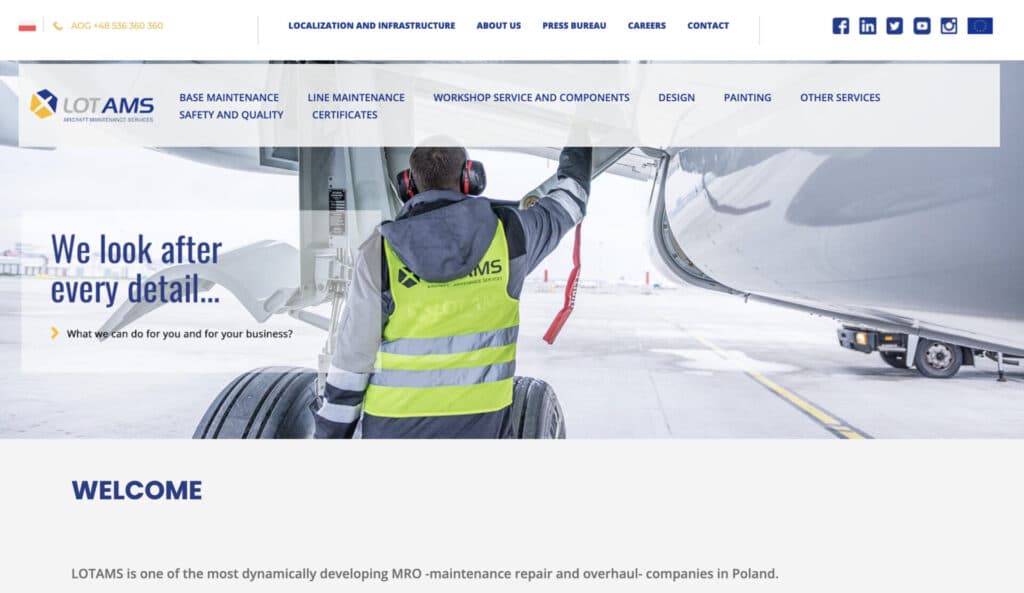
LOT Aircraft Maintenance Services operates as one of Europe’s premier MRO providers, offering comprehensive maintenance for commercial aircraft fleets. The company maintains EASA Part-145 and FAA Part 145 certifications, enabling service to both European and U.S.-registered aircraft.
Headquartered in Warsaw, LOT AMS specializes in narrow-body and wide-body commercial aircraft maintenance, with particular expertise in Boeing and Airbus families. The facility provides line maintenance, base maintenance including C-checks and D-checks, engine maintenance and component services, and paint and interior refurbishment capabilities.
Website:- LOTAMS
2. ACC Columbia Jet (Germany)
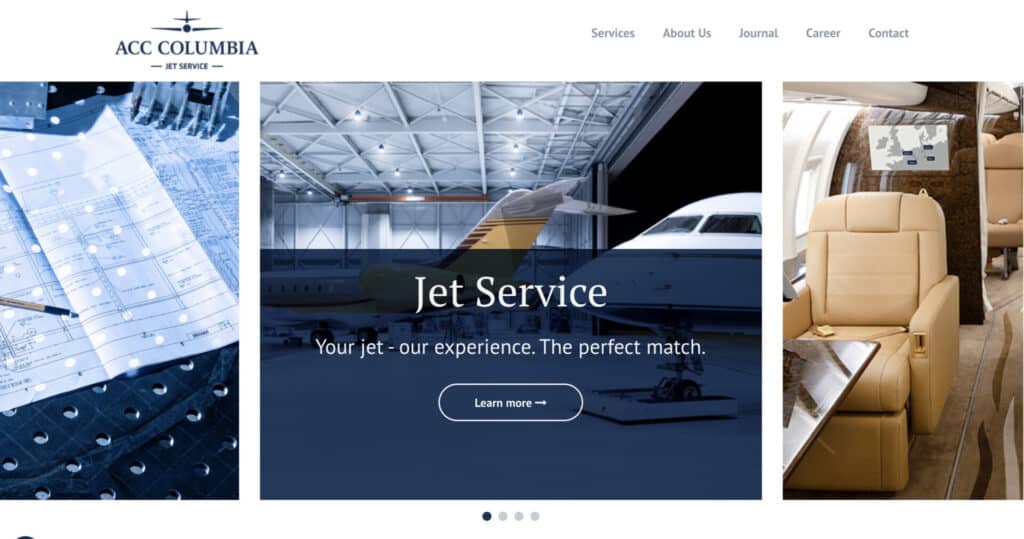
ACC Columbia Jet serves business aviation clients across Europe with specialized maintenance for corporate and private aircraft. The company focuses on Bombardier, Gulfstream, and Cessna Citation aircraft, providing tailored service for discerning aircraft owners.
Based in Germany, ACC Columbia Jet offers scheduled and unscheduled maintenance, avionics upgrades and installations, interior refurbishment projects, and pre-purchase inspections for aircraft transactions. The company’s reputation for quality workmanship and customer service makes it a preferred choice for European business aviation operators.
Website: ACC COLUMBIA
3. APP Jet Center (Florida)

APP Jet Center operates in Florida’s robust aviation market, providing comprehensive maintenance services for business aircraft. The facility specializes in Gulfstream, Bombardier, and Embraer aircraft, serving corporate flight departments and private owners.
APP Jet Center maintains FAA Part 145 certification and offers scheduled maintenance programs, major inspections and repairs, avionics installation and troubleshooting, and paint and interior services. Florida’s strategic location makes APP Jet Center accessible to operators throughout the Americas and Caribbean.
Website: App Jet Center
4. MROH Group (Florida)

MROH Group delivers specialized MRO services with focus on technical excellence and customer satisfaction. Operating from Florida, the company serves diverse aircraft types including business jets and commercial aircraft.
MROH Group provides maintenance planning and program development, component repair and overhaul services, technical consulting and engineering support, and parts procurement and logistics management. The company’s comprehensive approach addresses complete aircraft maintenance needs.
Website:- MROH Group
5. COOPESA (Costa Rica)

COOPESA operates Central America’s largest MRO facility, serving regional and international operators. The company maintains FAA, EASA, and multiple Latin American authority certifications, positioning it as a strategic maintenance hub for the Americas.
Located in Costa Rica, COOPESA specializes in commercial aircraft maintenance for Boeing and Airbus families, cargo aircraft conversions and modifications, engine maintenance and testing, and paint facility operations. The company’s competitive pricing and strategic location attract operators seeking cost-effective maintenance solutions.
Website: Coopesa
6. McCormick Air Center (Washington)

McCormick Air Center serves Pacific Northwest aviation operators with full-service maintenance capabilities. The Washington-based facility provides services for piston aircraft, turboprops, and light jets, catering to diverse general aviation needs.
McCormick Air Center offers airframe maintenance and inspections, engine maintenance and overhaul coordination, avionics installation and repair, and annual inspections and compliance services. The facility’s general aviation focus provides accessible maintenance for owner-operators and smaller flight operations.
7. B Coleman Aviation (Indiana)
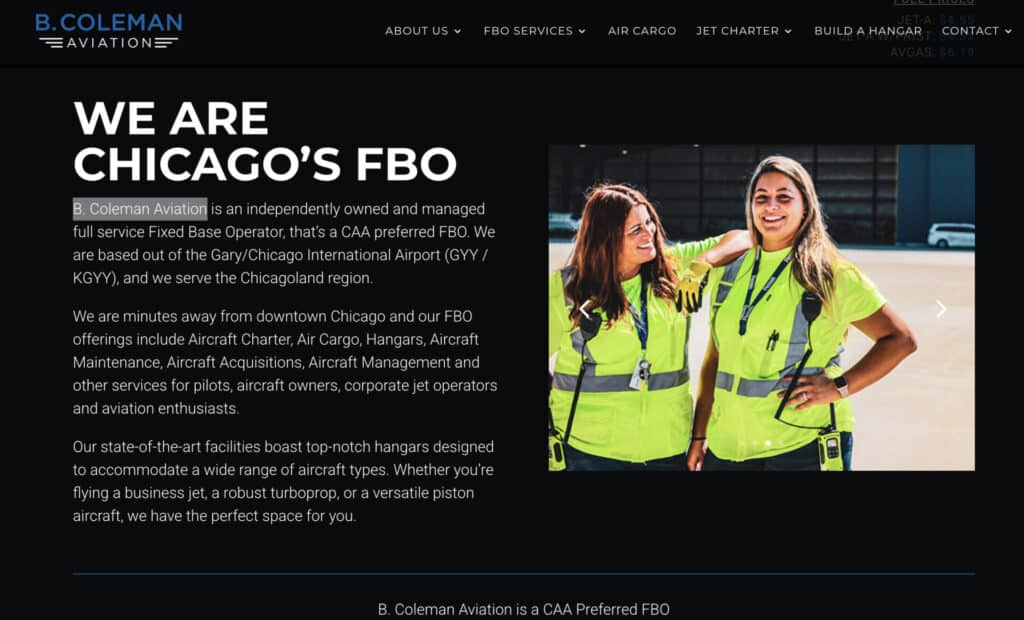
B Coleman Aviation delivers Midwest aviation maintenance services with emphasis on quality and reliability. The Indiana facility serves business aviation and general aviation clients with comprehensive maintenance capabilities.
B Coleman Aviation specializes in scheduled maintenance programs, major repair and alteration projects, avionics upgrades and installations, and pre-buy inspections for aircraft acquisitions. The company’s central U.S. location provides convenient access for operators throughout North America.
Website: B. Coleman Aviation
8. Sky Global Support (Florida)

Sky Global Support operates from Florida providing specialized maintenance services for business and commercial aviation. The company emphasizes rapid turnaround times and customer service excellence.
Sky Global Support offers line maintenance and AOG support, component repair and exchange programs, technical documentation and record management, and maintenance planning and consulting services. Florida’s aviation infrastructure supports the company’s comprehensive service delivery.
Website: Sky Global Support
9. Solair Group (Florida)

Solair Group provides full-service aircraft maintenance from its Florida facilities. The company serves diverse aircraft types with focus on business aviation and regional aircraft operations.
Solair Group delivers scheduled maintenance and inspections, major repairs and modifications, paint services and exterior refinishing, and hangar and storage services. The company’s integrated service approach simplifies maintenance coordination for aircraft operators.
Website: Solair Group
10. Ultramain Systems (New Mexico)
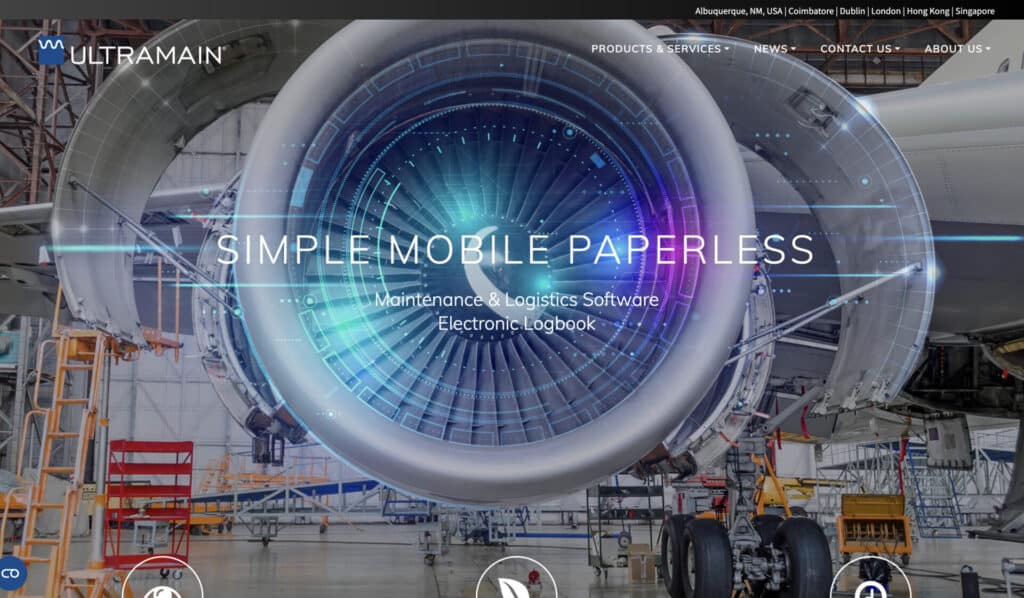
Ultramain Systems specializes in maintenance software solutions that support MRO operations worldwide. While not a traditional hands-on maintenance provider, Ultramain’s technology enables efficient maintenance tracking and regulatory compliance.
Based in New Mexico, Ultramain Systems offers maintenance tracking software, parts inventory management systems, regulatory compliance tools, and technical documentation systems. Airlines and MRO facilities worldwide rely on Ultramain’s solutions for operational efficiency.
Website: Ultramain
11. Machine Tek LLC (California)

Machine Tek LLC operates in California providing precision machining and component repair services for aviation applications. The company serves MRO providers and operators requiring specialized manufacturing capabilities.
Machine Tek LLC specializes in precision component manufacturing, repair and overhaul of aircraft parts, reverse engineering capabilities, and FAA PMA parts production. California’s aerospace industry concentration provides robust customer base and supply chain access.
Website: Machine Tek LLC
12. Skurka Aerospace Inc (California)
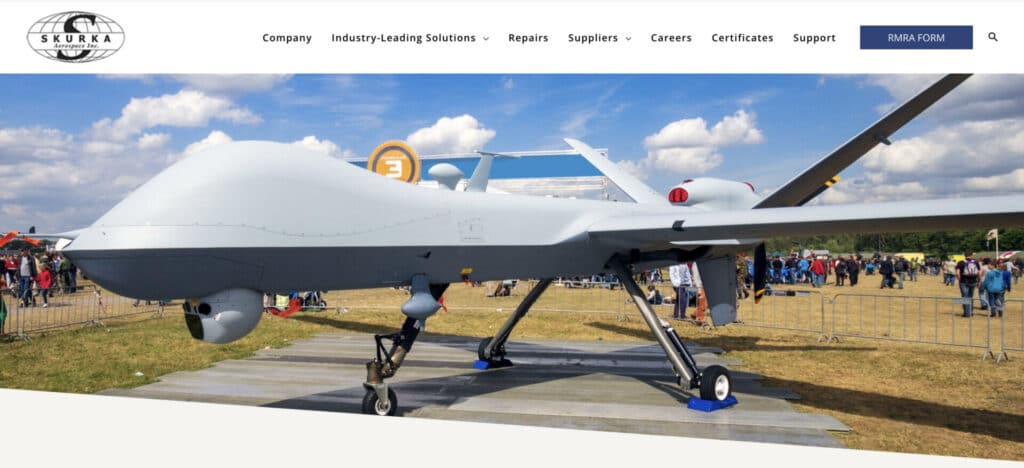
Skurka Aerospace Inc delivers specialized aviation maintenance and modification services from California. The company focuses on supplemental type certificate (STC) design and installation, aircraft interior modifications, and custom engineering solutions.
Skurka Aerospace provides aircraft modification design and installation, interior completions and refurbishment, avionics integration projects, and certification and regulatory support. The company’s engineering expertise enables complex modification projects.
Website: Skurka Aerospace Inc
13. Quub LLC (Pennsylvania)

Quub LLC operates from Pennsylvania providing innovative maintenance solutions and technical services. The company emphasizes technology integration and process efficiency in aircraft maintenance delivery.
Quub LLC offers maintenance planning and optimization, technical consulting services, digital maintenance solutions, and training and workforce development. The company’s modern approach addresses evolving aviation maintenance needs.
Website: Quub LLC
14. ACES Systems (Tennessee)

ACES Systems serves Tennessee aviation operators with comprehensive maintenance capabilities. The facility provides services for diverse aircraft types including business jets and turboprops.
ACES Systems delivers scheduled maintenance and inspections, major repair projects, avionics services, and parts procurement support. Tennessee’s central location provides strategic access to operators throughout the eastern United States.
Website: ACES Systems
15. TLD Group (France)
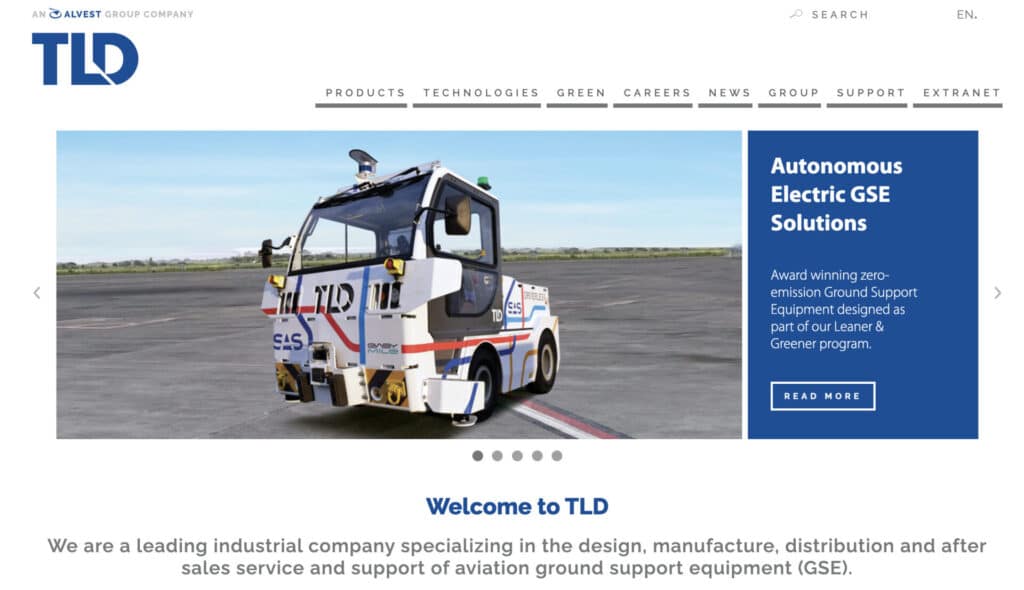
TLD Group operates globally as a leading ground support equipment manufacturer and service provider. While focused on equipment rather than aircraft maintenance, TLD’s products support MRO operations worldwide.
Based in France, TLD Group manufactures aircraft towing equipment, ground power units, aircraft deicing systems, and comprehensive GSE maintenance support. Airlines and MRO facilities rely on TLD equipment for efficient aircraft ground handling.
Website: TLD Group
Aircraft Maintenance Services Comparison
Evaluating maintenance providers requires comparing capabilities, certifications, and service scope. The following table summarizes key attributes of featured maintenance companies.
| Company | Location | Specialization | Certifications |
|---|---|---|---|
| LOT AMS | Poland | Commercial Aircraft | FAA Part 145, EASA |
| ACC Columbia Jet | Germany | Business Aviation | EASA, FAA |
| APP Jet Center | Florida, USA | Business Jets | FAA Part 145 |
| MROH Group | Florida, USA | Multi-type MRO | FAA Part 145 |
| COOPESA | Costa Rica | Commercial Aircraft | FAA, EASA, LATAM |
| McCormick Air | Washington, USA | General Aviation | FAA Part 145 |
| B Coleman | Indiana, USA | Business Aviation | FAA Part 145 |
| Sky Global | Florida, USA | Multi-type Support | FAA Part 145 |
Note: Scroll horizontally on mobile devices to view the complete table.
How to Choose the Right Aircraft Maintenance Provider
Selecting an aircraft maintenance provider requires systematic evaluation of multiple factors that impact service quality, cost, and operational convenience.
Certification and Compliance Verification should begin every provider evaluation. Confirm FAA Part 145 or equivalent regulatory approvals, verify OEM authorizations for your specific aircraft type, review the facility’s safety and quality records, and check for any enforcement actions or violations. The FAA repair station directory provides searchable certification information.
Service Capabilities Assessment ensures the provider can address your maintenance needs. Evaluate whether their services match your maintenance schedule requirements, confirm they possess specialized equipment for your aircraft type, assess their parts inventory and supply chain relationships, and inquire about turnaround time expectations and capacity availability.
Location and Accessibility significantly impact operational efficiency. Consider proximity to your primary operating base, availability of multiple facility locations for operational flexibility, hangar capacity and aircraft storage options, and access to major airports and transportation infrastructure.
Financial Considerations require transparent cost analysis. Request detailed pricing structures for common services, understand labor rate calculations and parts markup policies, evaluate payment terms and deposit requirements, and consider value-added services included in maintenance packages. Operators should also review their aviation insurance requirements, as maintenance provider selection may affect coverage terms.
Customer Support Evaluation reveals operational compatibility. Assess communication practices and project management capabilities, verify 24/7 emergency support availability, evaluate technical advisory services beyond basic maintenance, and review warranty policies and service guarantees. Air charter operators particularly value maintenance providers offering rapid AOG response.
Aircraft Maintenance Industry Trends
The aircraft maintenance industry continues evolving through technological advancement and operational innovation that reshape service delivery and efficiency.
Predictive Maintenance Technologies leverage artificial intelligence and data analytics to anticipate component failures before they occur. Modern aircraft generate terabytes of operational data that machine learning algorithms analyze to identify degradation patterns. This proactive approach reduces unscheduled maintenance events and optimizes component replacement timing.
Digitalization and Connectivity transform maintenance documentation and communication. Electronic maintenance records replace paper logbooks, mobile applications enable real-time status updates, cloud-based platforms facilitate global team collaboration, and blockchain technology ensures data integrity and traceability. These innovations improve accuracy while reducing administrative burden.
Sustainability Initiatives address environmental impact throughout MRO operations. Facilities implement waste reduction and recycling programs, adopt eco-friendly cleaning solvents and materials, utilize renewable energy for operations, and develop sustainable aviation fuel testing capabilities.
Workforce Development addresses critical technician shortages through enhanced training programs, partnerships with technical schools and universities, apprenticeship and mentorship initiatives, and competitive compensation and benefit packages. The industry recognizes that skilled technicians represent its most valuable asset.
FAA and EASA Certification Requirements
Understanding maintenance facility certifications enables informed provider selection and ensures regulatory compliance.
FAA Part 145 Repair Station Certification authorizes maintenance facilities to perform work on U.S.-registered aircraft. The certification process includes facility inspection and evaluation, quality control system review, personnel qualification verification, and capability assessment for requested rating classes. Repair stations receive specific ratings authorizing work on particular aircraft classes or components.
The FAA maintains oversight through regular inspections and surveillance. Facilities must maintain detailed maintenance records, employ appropriately certificated personnel, follow approved procedures and technical data, and implement continuous quality improvement programs. Additional information appears in 14 CFR Part 145 regulations.
EASA Part-145 Approval enables maintenance on European-registered aircraft. EASA standards align generally with FAA requirements while incorporating specific European regulatory nuances. Bilateral agreements between the FAA and EASA facilitate mutual recognition of certifications, allowing facilities to serve both American and European aircraft with appropriate dual approval.
OEM Authorizations supplement regulatory certifications with manufacturer-specific approvals. Aircraft manufacturers establish service networks of authorized facilities meeting their technical standards. OEM authorization provides access to proprietary maintenance manuals and technical bulletins, specialized tooling and test equipment, factory technical support and engineering assistance, and warranty repair approval and reimbursement. These authorizations particularly matter for newer aircraft under manufacturer warranty.
Emergency AOG (Aircraft on Ground) Services
Aircraft on Ground situations demand immediate response to minimize operational and financial impact. The best maintenance providers maintain 24/7 AOG coordination capabilities that mobilize technicians, expedite parts procurement, arrange transportation and logistics, and coordinate with regulatory authorities when necessary.
Effective AOG response requires global parts networks with strategic inventory positioning, mobile maintenance teams equipped for field repairs, relationships with ferry pilots and charter operators, and expertise managing complex recovery scenarios. Many operators establish preferred relationships with providers demonstrating consistent AOG performance.
Frequently Asked Questions About Aircraft Maintenance Companies
What certifications should an aircraft maintenance company have?
Aircraft maintenance facilities must hold FAA Part 145 certification for U.S.-registered aircraft or EASA Part-145 approval for European aircraft. Many international providers maintain both certifications. Additionally, OEM authorizations from aircraft manufacturers demonstrate compliance with brand-specific technical standards.
How often does an aircraft need maintenance?
Maintenance frequency depends on aircraft type, utilization, and regulatory requirements. Most aircraft require inspection every 50-100 flight hours or monthly, with progressive checks at longer intervals. Major inspections occur annually or at specific flight hour thresholds. Continuous airworthiness programs establish customized maintenance schedules.
What is the difference between line maintenance and heavy maintenance?
Line maintenance addresses routine checks and minor repairs between flights, typically completed within hours. Heavy maintenance involves comprehensive inspections and major work requiring days or weeks in a hangar. C-checks and D-checks represent increasingly extensive heavy maintenance events.
How much does aircraft maintenance cost?
Maintenance costs vary dramatically based on aircraft type, age, and utilization. Small piston aircraft may cost $5,000-15,000 annually, while large business jets can exceed $500,000 yearly. Commercial aircraft maintenance budgets reach millions annually. Operators should budget 10-15% of direct operating costs for maintenance.
Can I use any maintenance provider for my aircraft?
Maintenance providers must hold appropriate certifications for your aircraft type and nationality. Warranty considerations may require using manufacturer-authorized facilities. Insurance policies sometimes specify approved maintenance provider requirements. Charter operators must use facilities meeting their air carrier certificate specifications.
What should I look for in an aircraft maintenance contract?
Quality maintenance contracts specify scope of work and pricing structures, turnaround time commitments and scheduling priority, parts procurement responsibilities and markup policies, warranty terms for completed work, insurance and liability provisions, and termination conditions and dispute resolution procedures.
How long does aircraft maintenance take?
Duration varies by maintenance type. Routine inspections may require several hours to one day. Annual inspections typically take 3-7 days. Major checks like C-checks can extend 2-4 weeks, while D-checks may require 1-2 months. Paint and interior refurbishment projects often span several weeks.
Do maintenance companies offer mobile services?
Many maintenance providers offer mobile services for line maintenance, troubleshooting, and AOG recovery. Mobile capabilities include traveling maintenance technicians, portable tooling and test equipment, parts delivery and logistics coordination, and ferry pilot services when necessary. However, major maintenance always requires hangar facilities.
Selecting Your Aircraft Maintenance Partner
Aircraft maintenance provider selection represents one of the most consequential decisions aircraft owners and operators make. The right partnership ensures safety, reliability, and optimal asset management throughout the aircraft lifecycle.
Exceptional maintenance providers demonstrate consistent performance across certification and compliance, technical capability and service quality, communication and customer support, and operational efficiency and cost management. They invest in advanced technology and training while maintaining the personal relationships that characterize aviation’s professional community.
Whether operating commercial fleets, business aircraft, or personal airplanes, partnering with qualified maintenance professionals provides peace of mind that aircraft receive expert care from knowledgeable technicians using approved procedures and quality parts.
Aircraft owners seeking maintenance providers should evaluate multiple companies, request facility tours, review customer references, and assess cultural compatibility beyond technical qualifications. The best provider relationships evolve into trusted partnerships that support aviation operations for decades.
Explore additional aircraft maintenance companies on The Flying Engineer directory. For comprehensive aviation services including fleet management and operational support, consider connecting with aviation consulting professionals who can guide provider selection and contract negotiation.
The aviation industry’s commitment to safety and excellence begins with professional aircraft maintenance. By selecting qualified providers and maintaining proactive maintenance programs, operators ensure their aircraft remain airworthy, reliable, and ready to fly.
Authors
-
Radu Balas: Author
Pioneering the intersection of technology and aviation, Radu transforms complex industry insights into actionable intelligence. With a decade of aerospace experience, he's not just observing the industry—he's actively shaping its future narrative through The Flying Engineer.
View all posts Founder
-
Cristina Danilet: Reviewer
A meticulous selector of top-tier aviation services, Cristina acts as the critical filter between exceptional companies and industry professionals. Her keen eye ensures that only the most innovative and reliable services find a home on The Flying Engineer platform.
View all posts Marketing Manager
-
Marius Stefan: Editor
The creative force behind The Flying Engineer's digital landscape, meticulously crafting the website's structure, navigation, and user experience. He ensures that every click, scroll, and interaction tells a compelling story about aviation, making complex information intuitive and engaging.
View all posts Digital Design Strategist

